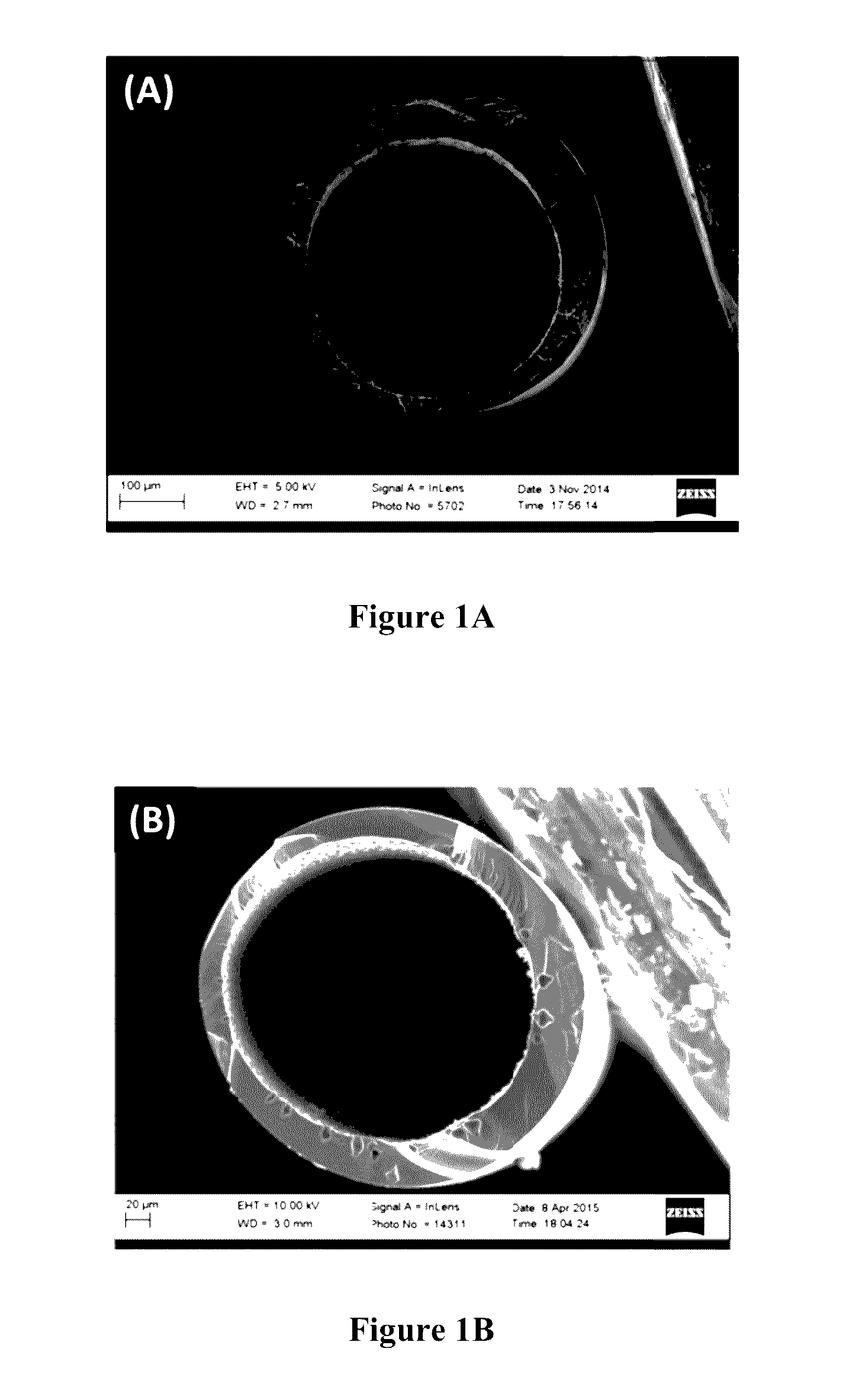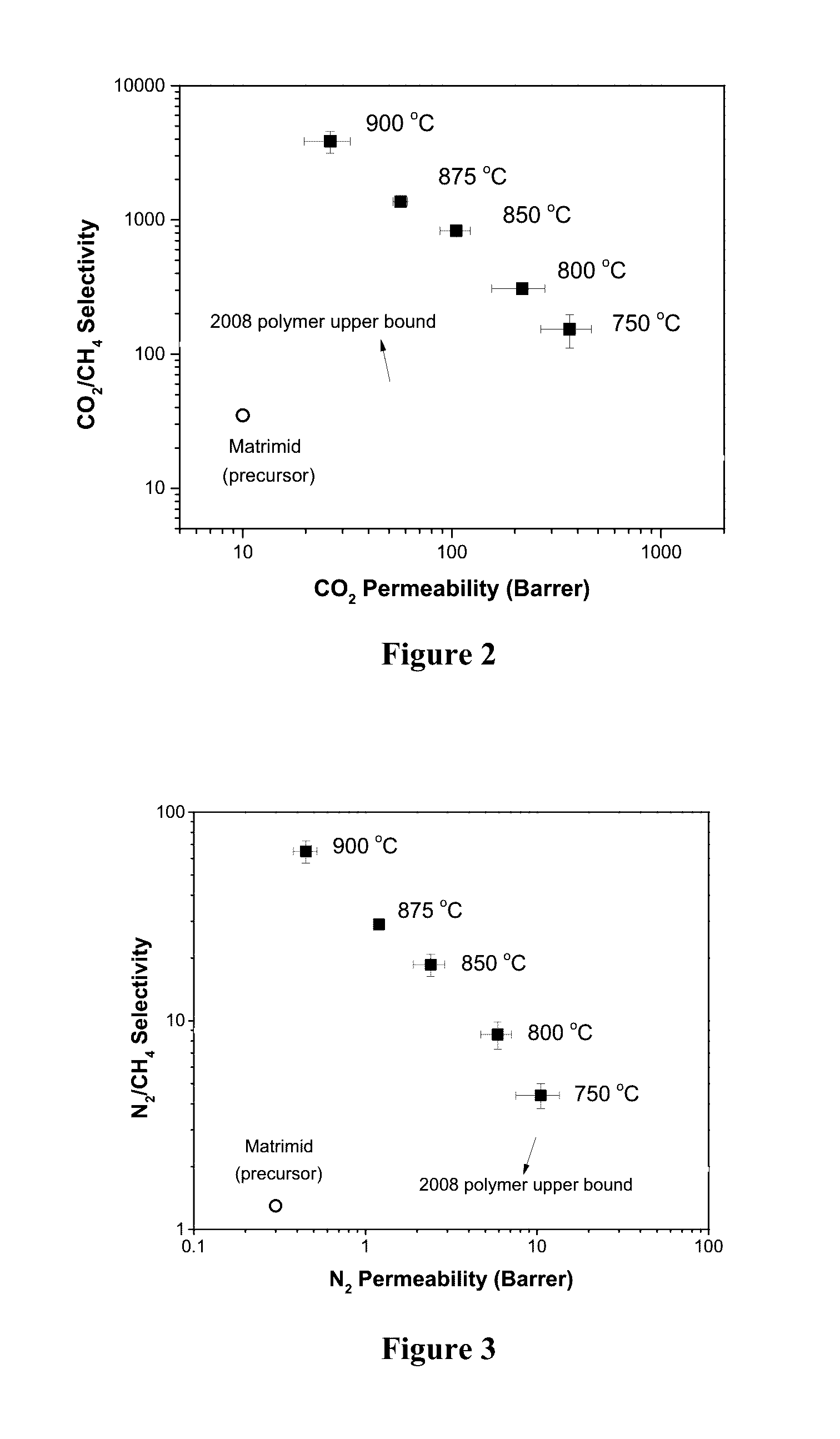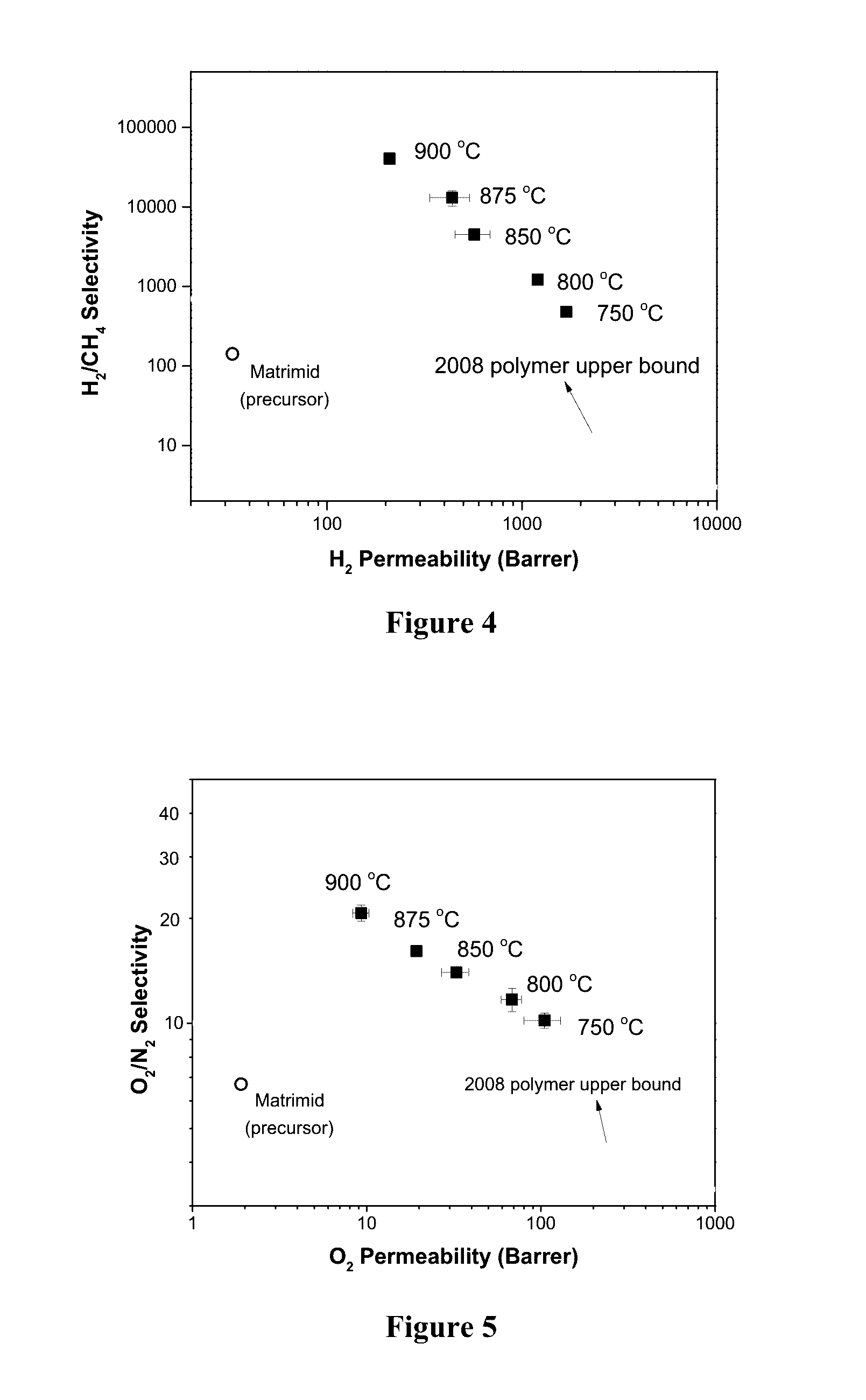Ultra-selective carbon molecular sieve membranes and methods of making
a carbon molecular sieve and ultra-selective technology, applied in membrane technology, membrane separation, membrane processes, etc., can solve the problems of pyrolysis temperature above 800° c., the formation of cms membranes at pyrolysis temperatures above 800° c. is rarely reported, and the ultra-micropore size is not uniform through the membrane, so as to reduce the sorption coefficient of the second gas species, increase the permselectivity of the resulting carbon mol
- Summary
- Abstract
- Description
- Claims
- Application Information
AI Technical Summary
Benefits of technology
Problems solved by technology
Method used
Image
Examples
Embodiment Construction
[0032]The present invention will now be described more fully hereinafter with reference to the accompanying drawings, in which one or more embodiments of the invention are shown. This invention may, however, be embodied in many different forms and should not be construed as limited to the embodiments described herein. Rather, these embodiments are examples of the invention, which has the full scope indicated by the language of the claims.
[0033]This present disclosure reveals a surprising and unexpected method to increase sorption selectivity of carbon molecular sieve (CMS) membranes by pyrolysis above certain temperatures. With increased sorption selectivity, ultra-selective CMS membranes with significantly increased permselectivity are formed. Such ultra-selective CMS membranes are potentially able to open the way for membrane-based separations to solve more challenging and unconventional problems such as purification of highly CO2 / N2 / H2S-contaminated natural gas and / or the separat...
PUM
| Property | Measurement | Unit |
|---|---|---|
| temperature | aaaaa | aaaaa |
| temperature | aaaaa | aaaaa |
| temperature | aaaaa | aaaaa |
Abstract
Description
Claims
Application Information
 Login to View More
Login to View More - R&D
- Intellectual Property
- Life Sciences
- Materials
- Tech Scout
- Unparalleled Data Quality
- Higher Quality Content
- 60% Fewer Hallucinations
Browse by: Latest US Patents, China's latest patents, Technical Efficacy Thesaurus, Application Domain, Technology Topic, Popular Technical Reports.
© 2025 PatSnap. All rights reserved.Legal|Privacy policy|Modern Slavery Act Transparency Statement|Sitemap|About US| Contact US: help@patsnap.com



